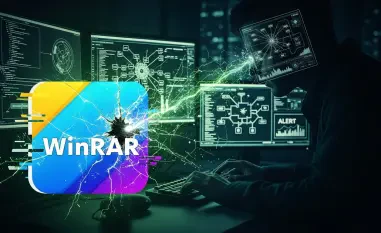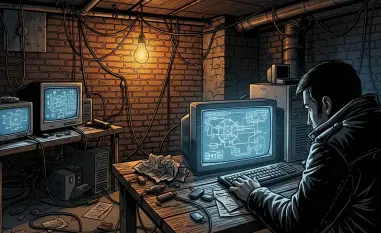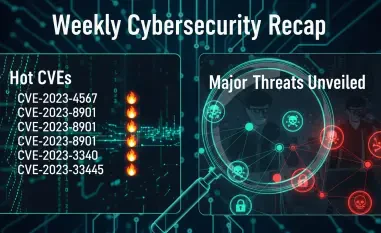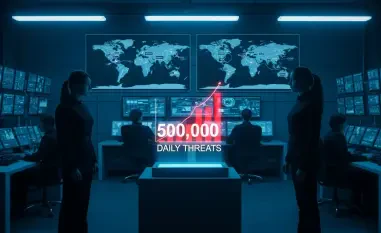Unveiling a New Threat in Cyber Warfare
In an era where digital battlegrounds are as critical as physical ones, a staggering statistic emerges: over 60% of government institutions worldwide have faced targeted cyber-espionage in the past two years, highlighting the urgent need for robust cybersecurity measures. Among the latest tools in this shadowy domain is DeskRAT, a remote access tool (RAT) deployed by the Pakistan-based hacking group TransparentTribe, also known as APT36. This sophisticated malware specifically targets Indian government entities using Linux-based systems, marking a significant escalation in cyber threats tailored to exploit geopolitical tensions.
The emergence of DeskRAT signals a shift in the tactics of state-aligned threat actors, focusing on niche operating environments often overlooked by traditional cybersecurity defenses. Unveiled through a campaign launched earlier this year, this tool zeroes in on systems running Bharat Operating System Solutions (BOSS) Linux, a distribution endorsed by the Indian government. The precision of this targeting raises critical questions about the vulnerabilities in governmental digital infrastructure.
This review delves into the technical intricacies of DeskRAT, evaluates its performance in real-world espionage scenarios, and assesses its broader implications for cybersecurity. By dissecting its mechanisms and impact, the aim is to shed light on how such tools are reshaping the landscape of modern cyber warfare, particularly in regions fraught with political friction.
Technical Analysis of DeskRAT
Core Mechanisms and Deployment Tactics
DeskRAT operates through a meticulously crafted attack chain, beginning with phishing emails that deliver malicious ZIP archives masquerading as defense-related documents. These archives, once opened, trigger Bash command sequences that download and execute a binary payload from dedicated staging servers. Unlike earlier TransparentTribe operations that relied on legitimate cloud platforms, this shift to custom infrastructure demonstrates an intent to evade detection and enhance control over malware distribution.
A notable feature of the deployment is the use of decoy PDFs displayed to victims upon opening the malicious files. This tactic distracts users from the background execution of harmful code, buying time for the malware to establish a foothold. The deliberate design of these lures, often tied to current geopolitical events, amplifies the likelihood of successful infiltration, showcasing a blend of psychological manipulation and technical prowess.
Features and Operational Capabilities
Developed in Golang, DeskRAT boasts a robust set of capabilities tailored for Linux environments. It establishes command-and-control (C2) communications via WebSocket, enabling attackers to remotely upload and execute files, collect sensitive data limited to under 100MB, and maintain persistence through Linux-specific techniques. This focus on a less commonly targeted operating system highlights a strategic pivot toward exploiting gaps in conventional security frameworks.
One of the standout aspects of this RAT is its sophisticated command interface, complete with a dashboard for real-time monitoring, file collection, and remote access across compromised systems. This level of control allows operators to manage multiple infected endpoints efficiently, gathering intelligence with precision. The technical sophistication suggests a significant investment in development, possibly accelerated by advanced technologies like large language models (LLMs) to streamline coding processes.
The performance of DeskRAT in espionage operations is further enhanced by its ability to remain undetected for extended periods. Its lightweight data collection limit ensures minimal network noise, reducing the chances of triggering alerts. This balance between functionality and stealth positions it as a formidable tool in the arsenal of cyber-espionage actors.
Strategic Impact and Real-World Applications
Targeting and Exploitation of Geopolitical Events
DeskRAT has been instrumental in espionage efforts against Indian military and government networks, particularly during periods of heightened tension such as the protests in Ladakh and New Delhi earlier this year. The phishing lures employed in these attacks often reference authentic defense communications and official directives, lending credibility to the malicious content and increasing the success rate of infiltration. This calculated use of thematic bait underscores the intersection of cyber tactics with real-world political dynamics.
The focus on BOSS Linux systems reveals a deep understanding of the target environment, as these systems are integral to certain Indian governmental operations. By honing in on a specific and relatively niche platform, TransparentTribe exploits a potential blind spot in cybersecurity defenses, where resources and attention are often directed toward more prevalent operating systems like Windows. This strategic targeting amplifies the impact of DeskRAT in sensitive sectors.
Broader Trends in Cyber-Espionage Evolution
Beyond the specifics of this tool, the campaign reflects a broader trend among threat actors to develop tailored malware and infrastructure. The shift toward Linux environments indicates a growing recognition of diverse technological ecosystems within governmental bodies. Additionally, the suspected use of LLMs in malware creation points to an alarming acceleration in development cycles, creating a significant challenge for defenders who struggle to match this pace with detection and response mechanisms.
The disparity in technological adoption between attackers and defenders is a pressing concern. While threat actors leverage cutting-edge tools to refine their attacks, regulatory and resource constraints often hinder the ability of security teams to keep up. This imbalance necessitates a reevaluation of cybersecurity strategies, emphasizing the need for proactive measures and international collaboration to address such sophisticated threats.
Challenges in Countering DeskRAT
Technical and Strategic Hurdles
One of the primary challenges in mitigating the threat posed by DeskRAT lies in its focus on Linux systems, which are less frequently targeted compared to other platforms. This relative rarity can lead to a lack of specialized expertise and tools among defenders, making it harder to identify and neutralize infections. The stealthy nature of the malware, combined with its persistence mechanisms, further complicates efforts to eradicate it from compromised networks.
Another obstacle is the rapid development timeline potentially enabled by LLMs. Attackers can iterate and deploy new variants of malware at a pace that outstrips traditional threat intelligence cycles. This speed disparity places immense pressure on cybersecurity professionals to adapt quickly, often with limited resources or regulatory support, especially in governmental sectors where bureaucratic delays can impede swift action.
Systemic Implications for Cybersecurity
The broader implications of tools like DeskRAT extend to the systemic vulnerabilities within critical infrastructure. Governmental networks, often burdened by legacy systems and inconsistent security policies, present ripe targets for espionage. Addressing these gaps requires not only technical upgrades but also a cultural shift toward prioritizing cybersecurity at every level of administration, a process that demands significant time and investment.
Looking Ahead: The Future of Cyber-Espionage Tools
Potential Evolution of DeskRAT
As cyber threats continue to evolve, DeskRAT and similar tools are likely to incorporate even more advanced features over the next few years, potentially from this year to 2027. Further integration of LLMs could enable attackers to generate highly customized variants tailored to specific targets or sectors, increasing the difficulty of crafting universal defenses. Additionally, the expansion of capabilities to other operating systems or environments could broaden the scope of potential victims.
The adaptability of threat actors suggests that future iterations might focus on automating more aspects of the attack chain, reducing the need for manual intervention and further enhancing efficiency. Such advancements would place additional strain on already stretched cybersecurity resources, necessitating innovative approaches to threat hunting and mitigation within governmental and military domains.
Implications for Global Security
The long-term outlook for cyber-espionage underscores a growing arms race in digital warfare, where state-aligned groups continuously refine their tools to exploit geopolitical fault lines. The persistent targeting of governmental infrastructure by entities like TransparentTribe highlights the urgent need for international frameworks to address cyber threats as a collective security issue. Without such cooperation, isolated efforts may fall short against adversaries operating with coordinated intent and advanced technology.
Final Verdict and Next Steps
Reflecting on the analysis, DeskRAT stands out as a highly effective instrument of cyber-espionage, blending technical sophistication with strategic targeting to compromise Indian government networks. Its deployment earlier this year exposed critical vulnerabilities in Linux-based systems and highlighted the adept use of geopolitical events to craft convincing phishing lures. The performance of this tool under real-world conditions demonstrated a chilling precision that challenged existing defense mechanisms.
Moving forward, actionable steps must include the development of specialized training programs focused on securing niche operating systems like BOSS Linux, ensuring that cybersecurity teams are equipped to handle unconventional threats. Investment in AI-driven threat detection systems could help bridge the gap created by rapid malware development, offering a counterbalance to tools possibly built with LLMs. Finally, fostering cross-border partnerships to share intelligence on emerging RATs and other cyber weapons will be crucial in building a resilient defense against the next wave of digital espionage.













